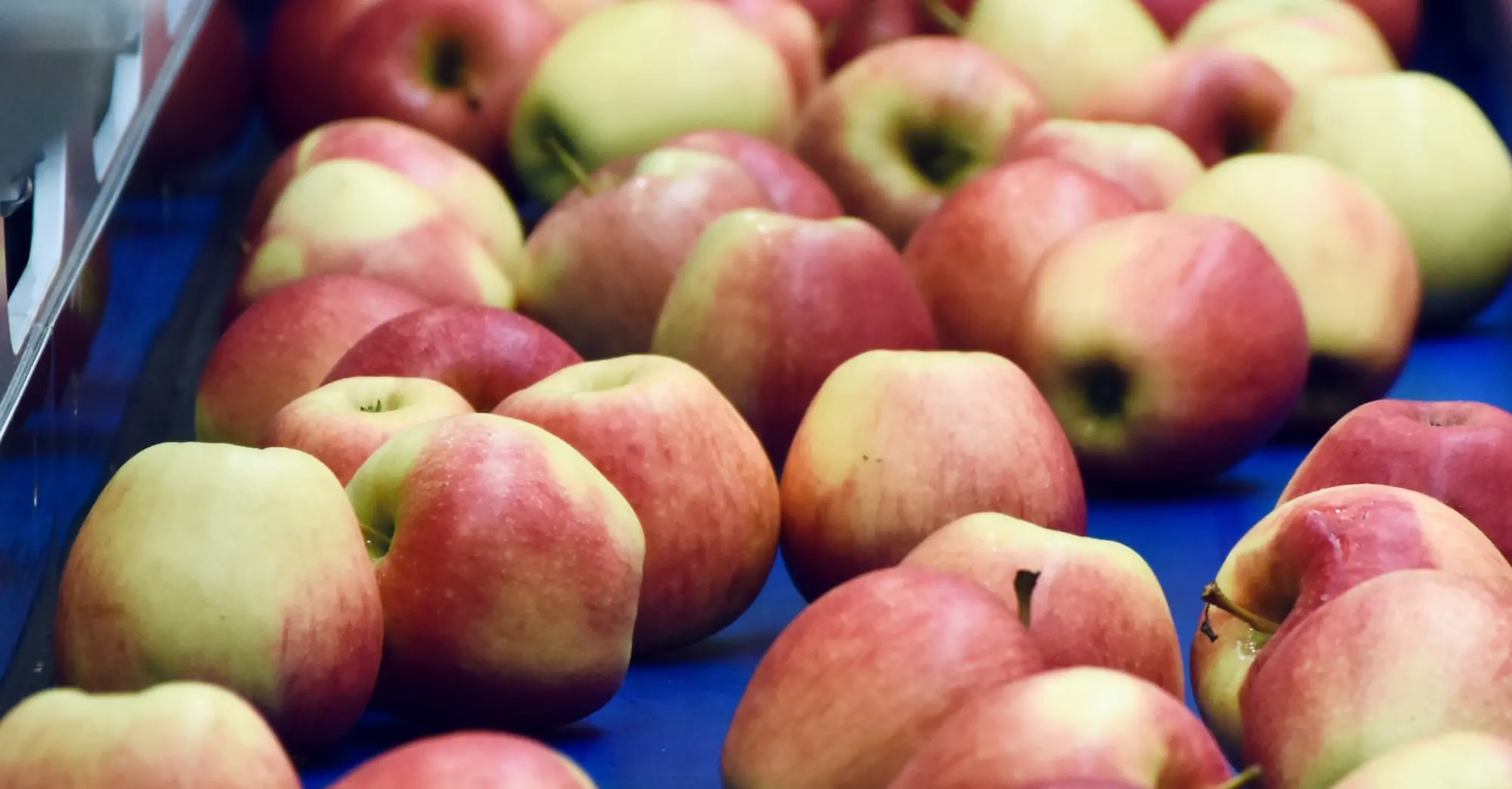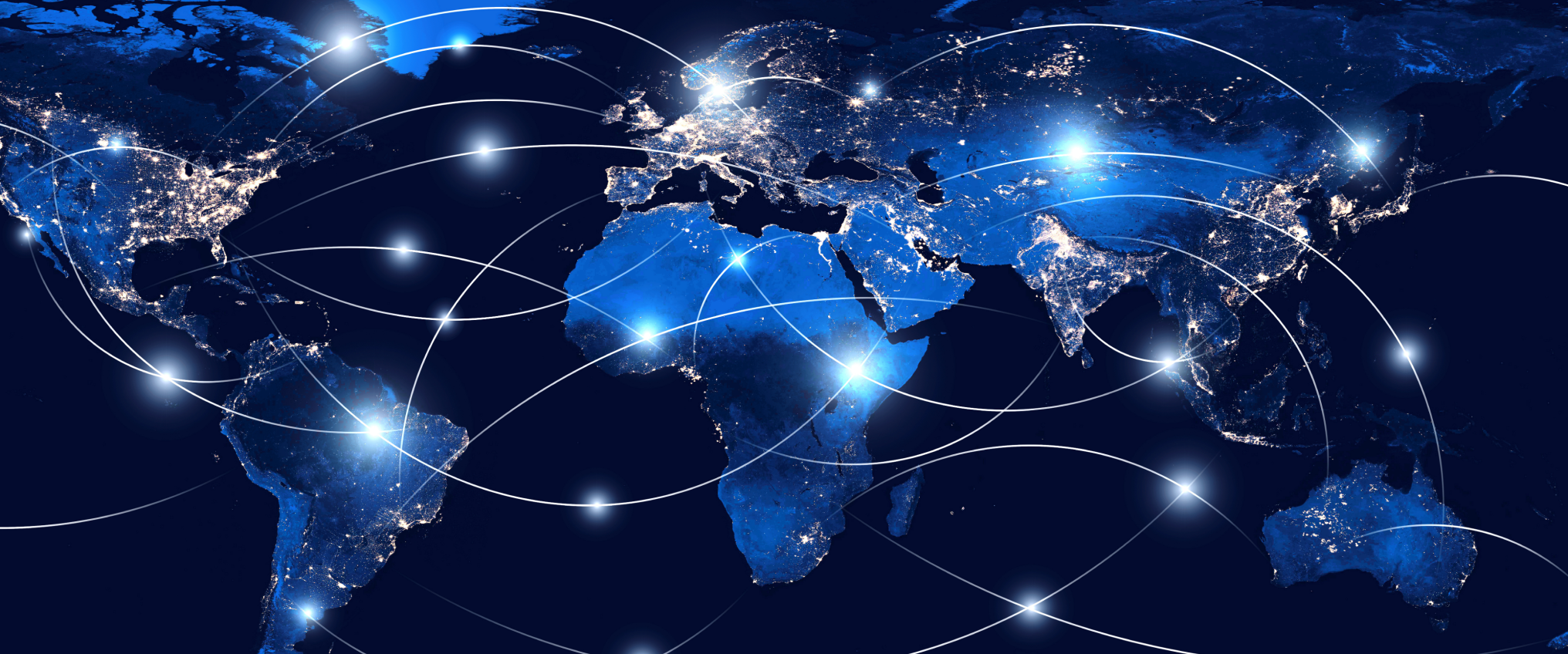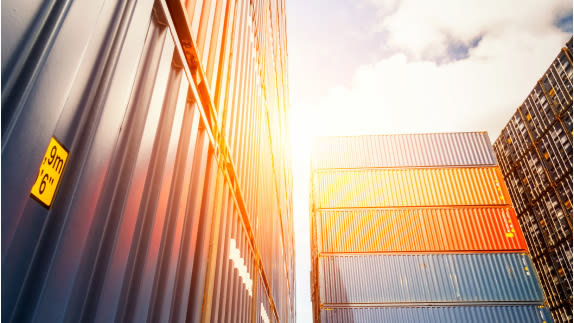In recent years, we have all experienced the economic turmoil caused by global crises – from the Covid-19 pandemic to the Russian invasion of Ukraine and the multiple disruptive impacts of climate change. As a result, vulnerabilities in global supply chains have been exposed and questions have been raised about the resilience of the international trading system.
In response, policymakers and business leaders have started exploring ways to tackle supply chain fragility. One such avenue is the circular economy. By eliminating waste and pollution, keeping products and materials in use, and ensuring economic activities contribute to the regeneration of nature, the circular economycircular economyA systems solution framework that tackles global challenges like climate change, biodiversity loss, waste, and pollution. It is based on three principles, driven by design: eliminate waste and pollution, circulate products and materials (at their highest value), and regenerate nature. helps to reduce our dependence on raw materials and increase the resilience and adaptability of supply chains.
A study of Belgian businesses in 2020 showed that those employing circular business models suffered considerably less from lockdown restrictions during the pandemic – 66% indicated that they didn’t suffer any losses compared to 2% of ‘non-circular’ companies. This includes those designing regenerative food systems, investing in repairrepairOperation by which a faulty or broken product or component is returned back to a usable state to fulfil its intended use., refurbishment, and remanufacturing infrastructure, and developing more localised, diversified, and distributed production capabilities.
The benefits of a circular economy are clear and trade negotiators have therefore turned their attention to its application. So far, efforts have focused on minimising waste, with references to the circular economy appearing in the Basel Convention, the EU Waste Shipment Regulation, and specific provisions for food waste such as the United States-Mexico-Canada Agreement. Other trade negotiations have focused on the circular economy as a means to keep materials in use, such as the EU-Vietnam Free Trade Agreement provision for remanufactured goods.
However, a broader understanding of the positive impacts a circular economy can have in relation to trade is developing. In 2018, circular economy became a topic at the World Trade Organisation (WTO) Public Forum, and since then WTO has noted the circular economy’s importance for achieving many of the UN Sustainable Development Goals and creating better outcomes for people and the environment.
This signals positive progress towards a more resilient and regenerative system. Yet, at the same time, significant knowledge and implementation gaps remain. To fully integrate the principles of the circular economy into trade and trade-related policies, the following areas need to be advanced:
Mapping of the impacts of circular economy trade against multiple policy areas to ensure alignment
Investment in the mechanisms that can provide better information about goods, through transparency and traceability
Development beyond trade in durable goods to consider trade in services and agricultural goods

Mapping the impacts on multiple policy areas
International trade and circular economy intersect in multiple areas. It is relevant to trade in services, trade in food products, trade in second-hand goods, trade in goods for refurbishment and remanufacturing, trade in materials for recycling, and trade in secondary raw materials, among others.
The breadth and complexity of both global trade and the circular economy mean that, in order to tackle this issue holistically, the interconnections between trade and other policy areas at both international and national levels need to be identified. These policy areas include:
Border measures like tariffs, export restrictions, and anti-dumping
Regulatory measures like standards, Extended Producer Responsibility (EPR) schemes, Sanitary and Phytosanitary (SPS) checks, and technical regulation
Economic incentives such as subsidies, Intellectual Property Rights (IPRs), and free allowances
Awareness-raising and capacity building, for example, the WTO Aid for Trade initiative or the agenda of UN Capacity Building Task Force on Trade, Environment and Development
Trade agreements, for example by strengthening the Trade and Sustainable Development (TSD) Chapters and also including provisions on circularity throughout the trade agreements
To use the example of border measures, a better understanding of which policies can best stimulate trade in secondary raw materials is key. If secondary raw materials fulfil certain quality standards and/or provide evidence of a lower carbon footprint, they could then receive beneficial treatment in terms of trade and customs regulations.
Another example would be changing sourcing practices through implementing tariffs that favour agricultural products grown in ways that have regenerative outcomes for nature. To a certain extent, trade policy is an upstream measure, and it can have an impact on the whole value chain. Specific options for incorporating circular economy provisions in trade agreements might cover, among other things, making market access commitments to procurement processes and best practices in support of a circular economy or fostering investments in a circular economy.
Integrating circular economy considerations into these areas will require revision of existing policies, innovation, and collaboration – both across departments and portfolios, as well as between the private and the public sector. As trade agreements move into new areas, governments will often rely on knowledge and expertise from businesses to negotiate complex regulatory changes. Businesses committed to a circular economy transition can become partners and collaborators for the trade negotiators by helping to define the issue, provide information and expertise, and mobilise support from other business groups transnationally.
There is a range of new research and frameworks for stakeholders to draw on, including IISD and Sitra’s report on incorporating circular economy provisions in regional trade agreements (RTAs), IEEP report and country level assessments, and the new Chatham House framework, which emphasises the need for a just and inclusive circular economy transition. The existing frameworks can offer an initial structure and help both public and private actors embed circular economy considerations in trade agreements and trade-related policies.
What do we mean by an ‘international trading system’?
The international trading system comprises many thousands of unilateral, bilateral, regional, and multilateral rules and agreements among more than two hundred nations. International trade encompasses multiple actors and agreements that are tangled and overlapping, which has led analysts to label the trade regime a “spaghetti bowl” of agreements.
Not only is trade complex and multifaceted, but it also has gotten more complex and intricate over time. Contemporary trade agreements go much beyond traditional trade restrictions at the border. They cover regulatory standards, health and safety rules, investment, banking and finance, intellectual property, labour rights, environmental protection, and many other subjects.

Investing in transparency and traceability
Governments increasingly recognise the fundamental role of transparency and traceability of traded goods in empowering businesses and users to make more responsible choices that benefit the environment. There have been limited actions in this area to date. However, the beginnings of change are starting to happen.
For example, in the EU digital product passports are proposed as part of the Sustainable Products Initiative and as one of the key actions under the Circular Economy Action Plan (CEAP). The goal of this initiative is to lay the groundwork for a gradual introduction of a digital product passport in at least three key value chains by 2024, likely to include textiles, construction, industrial and electric vehicle batteries, and at least one other such as consumer electronics or packaging.
Transparency is about disclosure
It is the ability to make information (for example on product specifications, chemical inputs, materials used, and production practices) available to all actors of the supply chain (including users), allowing common understanding, accessibility, comparability, and clarity.
Traceability is about visibility
It is the ability to trace products, components, and materials, as well as the social and environmental conditions in which they were made, along the whole supply chain, including after use. In practice, advancing traceability in circular trade would mean visibility of material inputs, reverse logistics, and authentication enabling reuse.
Developments are already underway in the garment and footwear industry through the United Nations Economic Commission for Europe (UNECE) and United Nations Centre for Trade Facilitation and Electronic Business (UN/CEFACT) initiative, jointly implemented with the International Trade Centre (ITC) and support of the European Union. The initiative has developed and adopted a traceability protocol which will be able to verify the product claims for textile and garment products (such as percentage of recycled content) as well as enable the trade in used textiles. As part of the initiative, UNECE has been exploring the role of blockchain technology for end-to-end traceability in global textile and leather value chains. Through so-called UNECE blockchain pilots, companies have tested the UNECE traceability protocol to trace product information and the environmental impact of jeans, shirts, socks, bags, and shoes. The pilots cover the full spectrum of value chain tiers.
Similar pilots could be developed between countries to test solutions that improve transparency and traceability of trade flows. Smaller-scale interventions can allow governments and businesses to demonstrate circular principles in action – identifying challenges, building consensus, and attracting investments. As transparency and traceability pilots carry less risk and can build foundations for policy and regulatory change across markets, they are an attractive option for policymakers and businesses, and can lead to scaled up solutions.
Going beyond trade in durable goods
In conversations about circular economy trade, it is easy to default to thinking about trade in durable goods such as electronics, vehicles, or packaging. However, trade in services and trade in agricultural products are two examples that go beyond this and are equally essential elements of circular economy trade.

Trade in services
Trade in services has been accelerating. In the years leading up to the Covid-19 pandemic, global services trade had increased by an average of 3% annually since 2011, according to the WTO, while trade in goods increased by only 1%. While merchandise trade was increasing less rapidly than world GDP before 2020, trade in services was rising more rapidly, breaking a long-standing trend (since the pandemic, both trade in services and merchandise are still recovering to pre-pandemic levels, merchandise is picking up faster than service due to travel being included in services).
As global trade is moving towards servitisation, there is a high demand for understanding how trade in services can be included in the circular economy and trade discussions. For a circular economy, supportive services, such as design, engineering, research and development, maintenance, and digital services, are just as important as merchandise and material trade.
Circular economy businesses that rely on the international trade of services include businesses like Repack, a company born in Helsinki which now trades in Europe and North America, providing a returnable foldable and reusable packaging solution across borders. Another example is MaaS Global, a Mobility-as-a-Service pioneer offering users all city transport services in one app, available in various cities globally, from Vienna to Tokyo.
Circular economy businesses that rely on trade in services hugely depend for their success on international expansion and trade. One survey found that 70% of the providers of circular economy services polled export these services to customers in other countries. Hence, trade in services plays an essential role and services rules and market access commitments in trade agreements will be critical in paving the way for the development of new circular economy business models. Understanding how policymakers can encourage and promote trade in services through different policy levers will be needed.

Food and agricultural trade
Food and agriculture trade is often omitted in circular economy trade discussions which tend to focus on industries such as electronics, vehicles, and packaging. A circular economy for food actively contributes to the regeneration of natural systems and a holistic understanding of how food and agriculture trade policies can nurture a circular economy transition, therefore, needs further exploration.
Trade policies, agreements and international cooperation funding can be significant instruments to stimulate and incentivise more regenerative agricultural production while strengthening partnerships and commitments between countries. Additionally, they can be used to further advance the knowledge and understanding of what diverse, lower-impact and upcycled ingredients can mean in practice.
The European Union, the largest trade partner in the international trade of agricultural products, intends to include a chapter on sustainable food systems in all future trade agreements and to strengthen cooperation in this area with countries with whom an agreement is already in place. One example is the Sustainable Food System Chapter proposed as part of the modernisation of the EU-Chile Association Agreement currently being negotiated. Agricultural products make a significant share of this bilateral exchange, with fresh fruits, vegetables, and cereals being an important part. The Sustainable Food System Chapter aims at establishing closer cooperation between the EU and Chile in order that they can jointly move toward a food system where the environmental and climate impact of food production is reduced and resilience strengthened.
To go one step further in this example and other similar ones, regenerative food production principles could be integrated to enhance the cross-border trade of regeneratively produced goods.
More exploration is needed
There are still many unexamined areas of how trade in and for a circular economy will work but knowledge and implementation in this space is growing rapidly. In an interconnected and globalised world, with supply chains spanning continents, fully transformative change has to happen across borders. Mapping the interactions between trade and relevant circular economy policy areas, investing in product traceability and information transparency, and further supporting trade in services and trade in regeneratively grown food will all be necessary steps in this broader transformation. As the global trade rules and standards contribute to determining what kind of world we live in, aligning trade policies with circular economy outcomes will be a critical piece of the puzzle.






